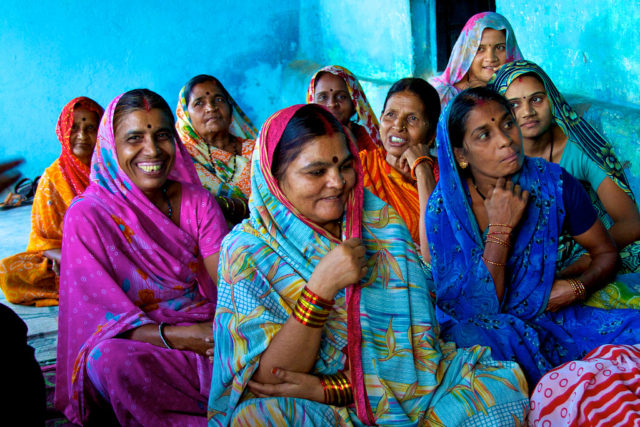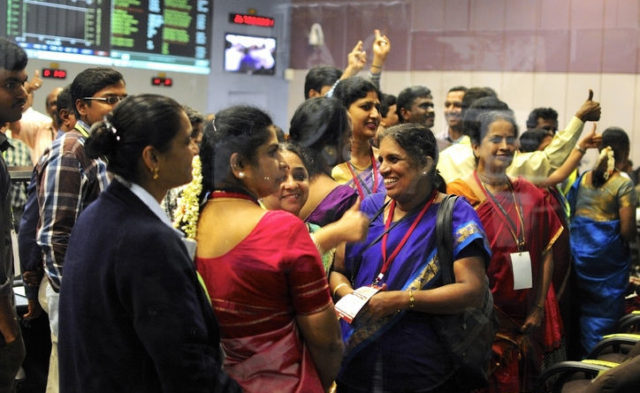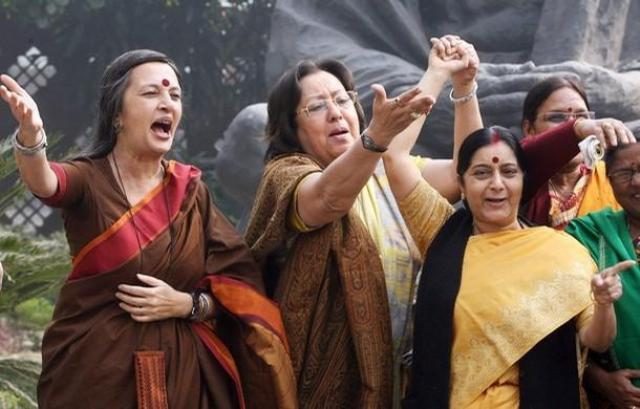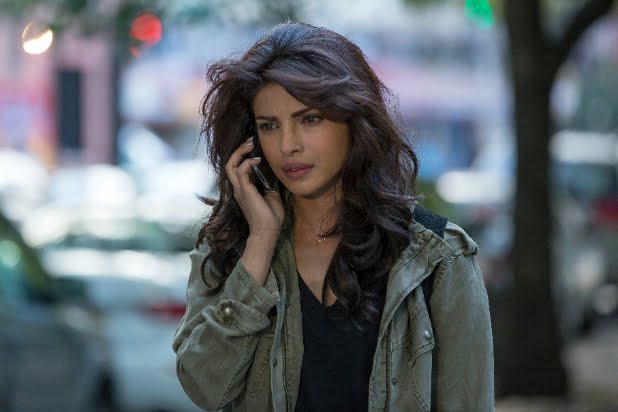As a young adult Indian woman, I am extremely curious to know to what challenges define the identity of an Indian Woman.
What does it mean to become a woman in our cultures? How does a woman conduct herself as a lady in my pocketed cultures? Are Sarojini Naidu, Indira Gandhi, Mother Teresa, Rani Gayatri Devi a few among our First Ladies by extension?
As vague and impractical this engagement might sound, I cannot provide solutions for these in one clean sweep. We do not live in a culture of Ladyship, it is still extremely class restricted. Therefore, I am not trying. I can merely begin to question.
So here I ask, How to be an Indian Woman?
A very basic understanding of a perfect Indian woman isn’t much of a deviation from the traditional understanding of a lady when she is expected to be virtuous, poised, resilient, sacrificing, a little submissive. Boldness is much worshiped only in temples.
In a society where our federal governments feel compelled to issue monetary rewards to families with newborn girl children to discourage female infanticide, it is something of a marvel that our women still survive.
Nobody cares about Austen.
Every day, relentlessly, women in India rise up against the rampant sexism that condition their roles and flourish. Sexism that is not simply perpetrated by our menfolk but ingrained among the women too. Yet, through generations, they have managed to carve out beautiful lives within their own restricted spaces.
When a group of simple-hearted village women share a laugh while washing their clothes by a pond, or when small-town ladies share their problems and seek solutions from each other over community work, they become a collective where patriarchy isn’t directly allowed.
When from some these groups emerge the likes of our Gulaabi Gang, we as a society succeed.
It’s too tricky to clearly demarcate what truly defines Womanhood in the Indian Consciousness.
What we can really be aware of is what it’s not. And please, let’s talk in terms of majority. Until very recently, a successful woman was seen as a successful mother, a successful wife, a successful sister, if nothing at least as a successful daughter. ‘India’s proud daughters’, our champion female Olympians were lauded as.
The statement looks very innocent, but it isn’t.
As irritating as it may be to challenge a statement of appreciation that willfully subverted a woman’s identity (c’mon, the male Olympians are called India’s proud sons and no feminist bothers to give a moot), it does ask for justifications we might need to refashion someday, somewhere else.
Read More: If You Still Want To Be A Lady Who Stands Out In A Crowd, Here Is An Alternative Guide
Because on an average day, a woman’s identity isn’t just her own, it comes with its own baggage and a whole network of associations, she is never quite seen as an individual. Even though as a social animal man too isn’t bereft of these identifiers, yet he can and does exist alone in Indian imagination.
Similarly, can every Indian woman not be known as a woman before everything else? Why does Indira Gandhi have to be termed as the First Man in Indian Politics?
She Can Be. But How, Is the Question.
Whenever a woman is foregrounded in our country, she is often sympathized with as a hapless hopeless creature. Women aren’t always asking for it, it is the patriarchal projection of weakness that they have not been able to wrest out from quite yet.
We are often surprised when women exploit that sympathy, are in splits to recognize whether if it’s the right thing to do. But, that is the exact dichotomy that is core to our identity, which informs how an Indian Woman exists- through an endless negotiation between strength and weakness.
The Story of Indian Women is thus, A Story of Strength rather than being one of Ladyship.
It is a collective history where no story is ever too small. These success stories are then the narratives where our role models emerge from. The profiles of such achievements made by women are variegated, but every one of them are important to remember not only how they reached that high but also what they had to fight against.
And role models are important. We always chase images, better ones. By way of providing sound examples where none exist, too many Indian women contribute to the silent wave of change that has improved their situation at various paces. I remember reading an interview of Priyanka Chopra, a truly classy urbane ‘lady’ who has built up her career from the dust through sheer hard work and talent. I admire her.
Maybe I don’t want to be her, but I know for a fact that millions of millennials who aspire to be her. Her projection inspires women to be themselves, to dare to dream, to be beautiful on their own terms. To be so much more. She has become one of the most prominent role models we have today.
So what is the perfect way to live as an Indian woman? I’ll say this: Be, but don’t be. Don’t offend. Don’t anger. Don’t challenge. Because whenever you do, you will stand out.
Then it’s up to you how you wield that visibility.
Image Credits: Google Images
Sources: Wikipedia, Press Information Bureau, Wikipedia
Read More:
http://edtimes.in/2017/05/how-not-to-be-a-lady/








































